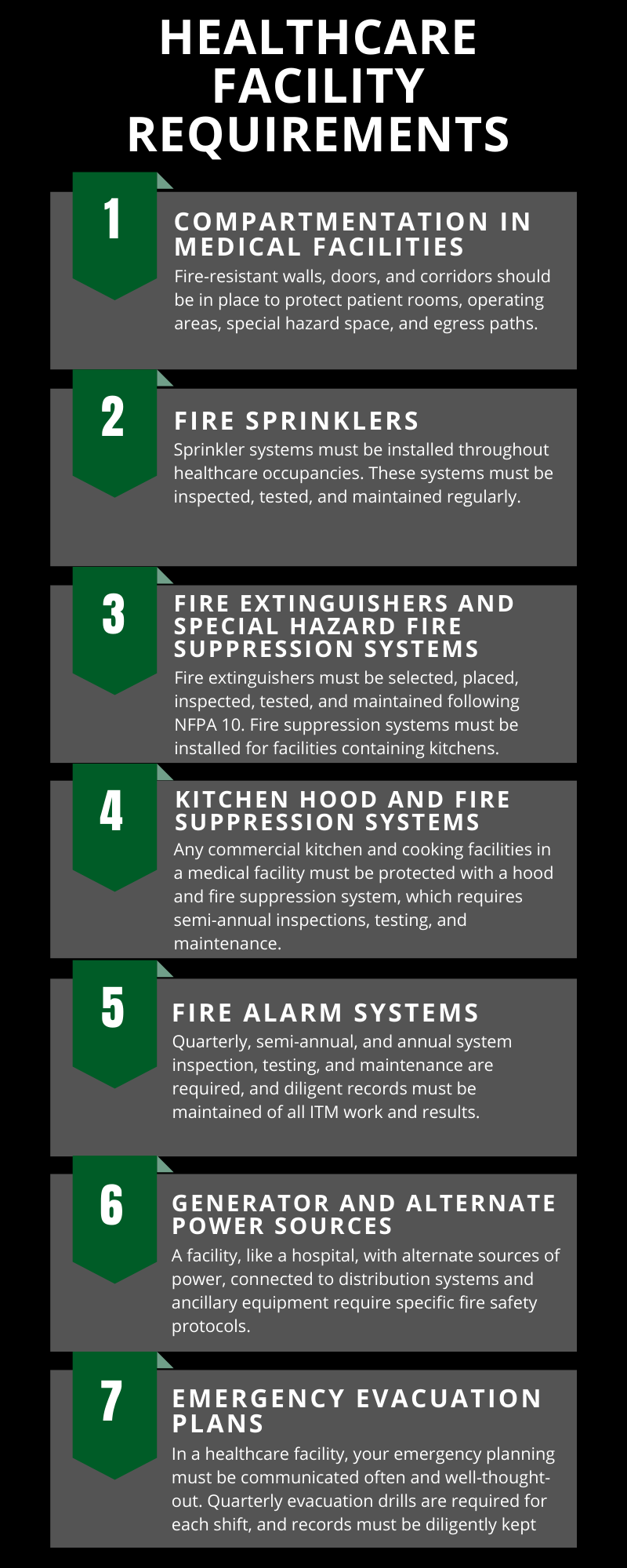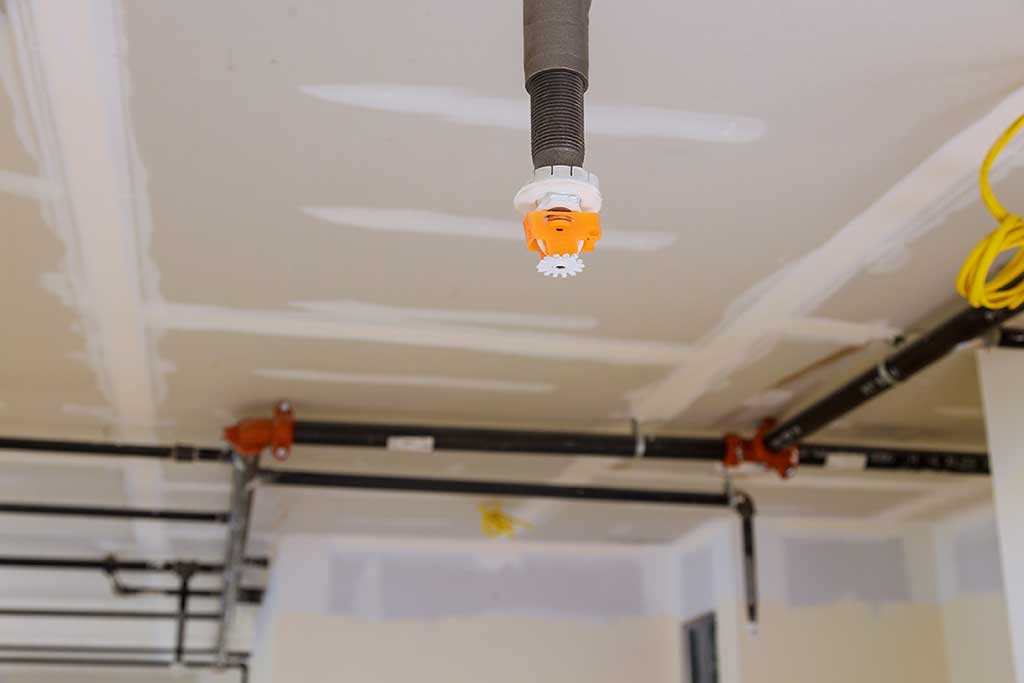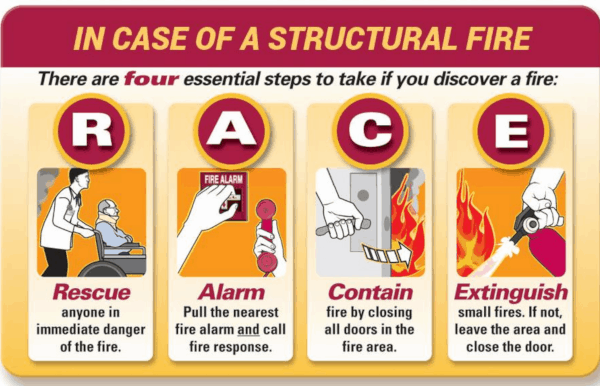Table of Contents
-
Introduction: Why Fire Protection in Healthcare Facilities Matters
-
Unique Risks in Healthcare Environments
-
Core Components of Fire Protection in Healthcare Facilities
-
3.1 Building Construction & Compartmentation
-
3.2 Detection, Alarm & Suppression Systems
-
3.3 Staff Training, Evacuation & Relocation Strategies
-
-
Regulatory Standards & Compliance
-
Best Practices & Strategies for Implementation
-
The Role of Maintenance and Continuous Improvement
-
Conclusion
1. Introduction: Why Fire Protection in Healthcare Facilities Matters



When it comes to patient care, the physical environment must be as safe as possible. That includes robust fire protection in healthcare facilities—a critical but often under-emphasised aspect of hospital design and management. Healthcare facilities are not like standard commercial buildings: they house patients who may be immobile, reliant on equipment, or highly vulnerable. A fire incident here can have catastrophic consequences. As one expert article notes: “Hospitals and healthcare facilities revolve around the concept of health and well-being … you want to take the necessary steps to ensure your healthcare facility … has the right fire safety precautions in place.”
In this article, we explore what fire protection in healthcare facilities entails, why it’s essential, the special challenges, key systems, compliance requirements, best practices and how to maintain a continuous improvement culture.
2. Unique Risks in Healthcare Environments
Healthcare facilities face a range of unique challenges when it comes to fire safety:
-
Many occupants may have limited mobility or be connected to life-support or monitoring equipment, making evacuation difficult.
-
The presence of medical gases (such as oxygen) increases fire risks and can accelerate fire spread.
-
High density of electrical and electronic equipment (MRI machines, IT/data centres, ventilators) creates added fire load and complexity.
-
Kitchens, laundries, storage rooms of flammable materials and complex building layouts further complicate fire protection.
-
Because some patients cannot evacuate independently, many healthcare buildings adopt a “defend-in-place” strategy.
Given these factors, the implementation of fire protection in healthcare facilities must be tailored, comprehensive and proactive.
3. Core Components of Fire Protection in Healthcare Facilities
3.1 Building Construction & Compartmentation
A critical foundation for fire protection in healthcare facilities is the building’s design and construction: walls, floors, and doors must compartmentalise fire and smoke, providing safe zones for patients and staff. The concept of “defend-in-place” means that evacuation of every occupant may not be immediately possible; the building must resist fire spread and allow safe care in situ.
Features to consider: fire-rated doors (especially in critical areas), smoke barriers, safe exit corridors, refuge areas for those unable to move quickly.
3.2 Detection, Alarm & Suppression Systems
For effective fire protection in healthcare facilities, detection and suppression systems must be highly reliable and suited to the complex environment. Key systems include:
-
Automatic sprinklers (especially quick-response type in patient-areas) to suppress fire growth early.
-
Smoke detectors, beam detectors, air-sampling devices for early warning—particularly in spaces with critical equipment.
-
Portable fire extinguishers and specialised suppression systems (e.g., clean-agent systems for data centres, MRI rooms) when water is not ideal.
-
Clear audible/visual alerts and integration with patient/staff evacuation signalling.
3.3 Staff Training, Evacuation & Relocation Strategies
Even the best hardware can fail if staff are unprepared. For effective fire protection in healthcare facilities:
-
Staff must be trained and drilled regularly on fire-prevention, detection response, alarm procedures, movement of patients and evacuation-relocation strategies.
-
Because many patients may not be ambulatory, healthcare settings often use “relocate within unit” or “defend in place” rather than full evacuation.
-
Fire prevention culture: monitoring kitchen equipment, electrical systems, oxygen use, smoking risks.
4. Regulatory Standards & Compliance
Compliance with recognised codes and standards is a cornerstone of fire protection in healthcare facilities. Some key references:
-
National Fire Protection Association (NFPA) standards such as NFPA 101 (Life Safety Code), NFPA 99 (Health Care Facilities) outline specific requirements for health-care occupancies.
-
The Joint Commission (TJC) standard “EC.02.03.05 Fire Protection” emphasises that building features, fire suppression/alarm systems must be fully operable in healthcare occupancies.
-
Occupational Safety and Health Administration (OSHA) fire-prevention and emergency planning rules apply in healthcare workplaces.
Meeting these standards is not a one-time task—it requires ongoing inspection, maintenance, documentation, auditing and staff engagement.
5. Best Practices & Strategies for Implementation
Below are practical best practices to implement robust fire protection in healthcare facilities:
-
Risk assessment: Conduct thorough fire-risk assessments specifically for healthcare settings—identify high hazard zones (oxygen storage, kitchen, laundry, labs) and patient areas with mobility challenges.
-
Design for special areas: In imaging suites, data centres or MRI rooms, adopt suppression systems that protect equipment without harming patients (e.g., clean-agent, water-mist).
-
Kitchen safety: The number one cause of fires in healthcare facilities is kitchen/equipment fire. Equip with regular cleaning, maintenance of hoods/ducts, staff training on grease/fire hazards.
-
Electrical and oxygen hazards: Ensure electrical installations are service-by certified personnel, avoid over-loading plugs, manage oxygen supply lines and keep smoking strictly separate from enrichment zones.
-
Compartmentation & escape routes: Ensure fire-rated doors, smoke barriers, clear corridors, refuge areas, and that means of escape are provided especially considering non-ambulatory patients.
-
Training and drills: Regular fire-drills, equipment inspections, staff refresher training, and clear incident-action plans. Embed a culture of proactive vigilance.
-
Documentation & monitoring: Maintain inspection records, incident logs, maintenance logs. Use management review cycles to improve.
-
Technological updates: Monitor new technologies such as advanced detection (air-sampling), alternative suppression (water-mist, clean-agent) that may suit critical healthcare spaces.
6. The Role of Maintenance and Continuous Improvement
Effective fire protection in healthcare facilities is not simply installing systems and then forgetting them. Continuous vigilance is required:
-
Regular testing of sprinklers, alarms, detection systems, extinguishers.
-
Monitoring changes in building usage (e.g., new MRI suite, expanded ICU, added oxygen therapy centres) and reassessing fire-risk accordingly.
-
Post-incident reviews and drills: learn from near-misses, clarify gaps.
-
Keeping up with regulatory updates, changing code requirements, best-practice research.
-
Engage all stakeholders: facility managers, biomedical engineers, nursing staff, emergency responders.
7. Conclusion
Fire protection in healthcare facilities is an absolutely critical discipline. Here’s a brief summary of the key points:
-
Healthcare settings have unique vulnerabilities — patients with limited mobility, high-hazard equipment, complex building layouts.
-
Effective fire protection covers building construction, fire detection/suppression systems, and people/training/evacuation strategy.
-
Regulatory frameworks (NFPA, Joint Commission, OSHA) provide the blueprint; but true safety comes from tailored implementation and a sustained culture of vigilance.
-
Best practices demand regular risk assessments, specialised design for critical zones, staff training, maintenance, and continuous review.
For any healthcare provider, system manager or facility designer, adopting a comprehensive fire-protection strategy means safeguarding lives—both of patients and staff—and protecting the mission-critical operations of care. By prioritising fire protection in healthcare facilities, we uphold the foundational goal of healthcare itself: providing a safe environment where healing can occur uninterrupted.
Internal Links (for website context)
-
See our article on modular cleanroom partitions and fire-rated doors in clean environments.
-
Explore our service page: turnkey cleanroom and fire-door solutions by Trio India.
External References (DoFollow)
-
NFPA resources on healthcare fire safety: NFPA Resources for Health Care Facility Safety NFPA
-
Joint Commission fire protection standard: EC.02.03.05 Fire Protection Joint Commission International
-
OSHA hospital fire hazards: OSHA eTool – Fire Hazards Hospitals OSHA